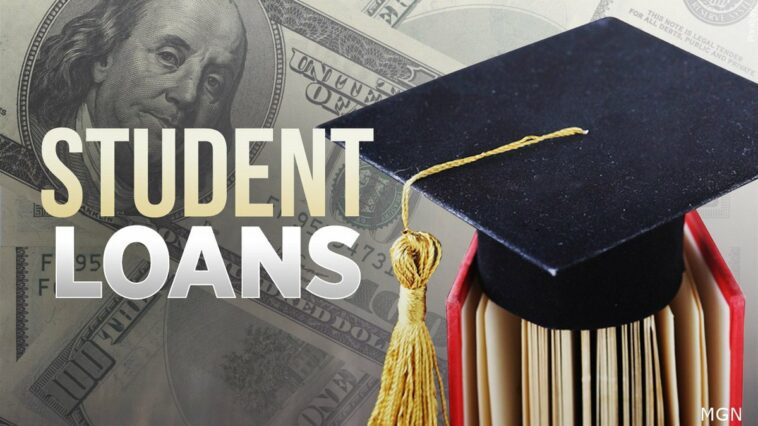Until recent years, the interest rates on federal student loans were all over the place. They were determined by the borrower’s loan status, such as subsidized or unsubsidized. For example, a student with a Direct Subsidized loan would have higher interest rates than a student with a Direct Unsubsidized loan. For graduate students, interest rates were also variable, with rates as high as six percent. But after the recession of 2009, interest rates for graduate students were reduced.
Since then, interest rates on federal student loans have remained relatively steady. The federal government sets interest rates for student loans each year, and the rates are adjusted accordingly. For loans that were taken out before July 1, the new rates will not affect current payments. However, new loans taken out after July 1 will be equipped with the new federal interest rates. And existing borrowers with high interest rates could be charged a one-time fee or a slightly higher interest rate as part of a refinancing program.
Interest rates
The interest rate on federal student loans is based on a variety of factors, including the Treasury note auctions that are held each year. These auctions are typically held in August or in February. The yield on the 10-year Treasury note is an important factor in setting interest rates. The yield on the 10-year Treasury note has been on a steady climb. It recently hit three percent. The Federal Reserve Board publishes weekly information on commercial paper. Commercial paper is a type of short-term promissory note. It is used by many companies to raise cash.
While interest rates on federal student loans have been relatively stable, the Federal Reserve has been holding interest rates close to zero for years. This has been effective in keeping the economy strong. However, as the economy recovers, interest rates on student loans may increase. This is because graduates who earn more will have a higher interest rate on their loans, which will result in them repaying their loans within 30 years. Those who do not repay their loans will have an outstanding balance.
The Federal Student Aid Office (FSAO) is the largest provider of financial aid to students in the United States. The FSAO recently announced that interest rates on undergraduate and graduate student loans will increase by a full percentage point in July. Interest rates on parent loans will increase by a similar percentage.
Interest rates on student loans have been one of the most important issues since the inception of the federal student loan program. Previously, the interest rate was fixed for the duration of the loan. The fixed rate was designed to reduce the cost of federal student loans to the government and to provide predictability for students and lenders. But now, the federal government is considering a different approach for setting interest rates.
One of the more interesting ways to set interest rates on student loans is to use a 10-year Treasury note. The 10-year Treasury note is a government securities. In the past, Congress had considered using a 10-year Treasury note for setting student loan interest rates. However, they opted for an alternative approach.
Subsidized loans
Whether you are planning to attend college or already have a degree, it is a good idea to look into student loans with subsidized loans. Taking out a loan that doesn’t accrue interest while you are in school can save you thousands of dollars over the life of the loan. These loans are also available to students who don’t qualify for other types of loans.
There are two types of federal student loans: unsubsidized loans and subsidized loans. Although the terms are similar, they differ in many ways. The main difference is that subsidized loans do not accrue interest while you are in school, while unsubsidized loans accrue interest during the time that you are in school. This can be a big advantage to borrowers who don’t qualify for other types of loan because they can’t make payments while they are in school.
Subsidized loans are available only to undergraduate students who have financial need. They are also only available to students who are enrolled at least half-time. These loans are part of the Federal Direct Student Loan program and the government pays the interest on them while you are in school. If you are interested in applying for a subsidized loan, you can start by filling out the Free Application for Federal Student Aid (FAFSA) every year.
There are also a few different types of repayment plans for student loans. One option is Income-Based Repayment (IBR). This plan starts with lower payments for the first few years of repayment. However, the payments will eventually increase over ten years. The government will also pay the interest on subsidized loans during deferment periods.
Another option for repaying subsidized loans is the Revised Pay As You Earn (REPAYE) program. This plan allows borrowers to defer payments for up to six months after they leave school. However, they will have to begin paying interest on the loan again.
Unsubsidized loans are also available to undergraduate students and graduate students. These loans are offered by the federal government and have lower interest rates than subsidized loans. However, they also come with higher annual and aggregate borrower maximums. These loans must be applied for using the FAFSA. They do not require a credit check and can be used by students who qualify for federal financial aid. In addition to the low interest rate, unsubsidized loans have a deferment option. During the deferment period, you can choose to defer paying interest on your loan.
While there are other ways to pay off your student loan debt, subsidized loans are the best option. They don’t accumulate interest while you are in school, and the government will pay the interest during the deferment period. The interest on these loans is also waived during the first six months after you leave school. These loans are available to undergraduate students, graduate students, and parents of dependent students.
There are other types of loans available, but they are usually much more expensive. Whether you choose to take out a loan or not depends on your personal financial situation. You should also consider other options such as private student loans, which can help cover any remaining tuition gaps.



